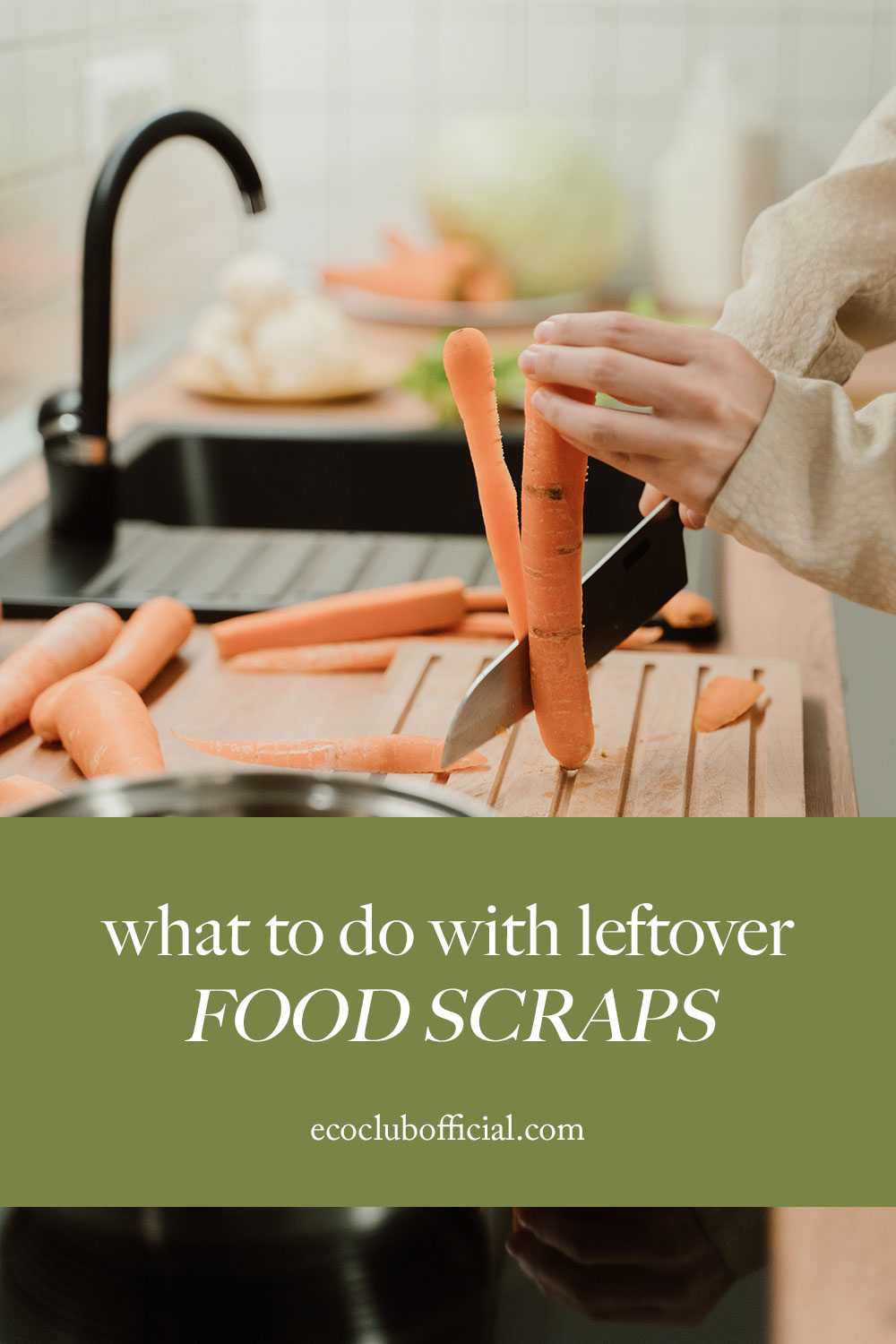Who always feels guilty throwing away food scraps? Like not the gross, moldy bits, but potatoes that have grown eyes, or spinach that’s just a *smidge* too wilted? While composting may be the first thing most people consider when trying to reduce their food waste, it’s not always a realistic option if you live in smaller spaces or live in an area with limited resources.
That’s why I love the “scrappy cooking” series created by Carleigh AKA @plantyou on Tiktok.
Carleigh’s created a whole movement unconventionally repurposing the odds and ends we don’t quite want to waste in our kitchen, but also don’t want to necessarily eat either.
And while I’m all for a Tiktok binge, I’ve decided to save everyone some time and make a list of a few common groceries that I’m sure most, if not all, of us would love to repurpose the food scraps from!

how to repurpose food scraps
Potato, Po-tah-do
While the pronunciation of this spud may be the subject of heated debate, its versatility in the kitchen is not. If you happen to peel your potato—and want to cut down your food waste—you can either season and crisp them up into potato skins or freeze them in a bag of scrapes that you can boil into veggie broth later on.
If, however, your potatoes have grown too many eyes for safe consumption, you can cut them up and propagate them in a small container of water or soil to grow your own plant (space permitting)!
Onion
Cutting an onion may make you tear up, but the thought of wasting them doesn’t have to! Like potatoes, onion scraps can be saved and frozen to make a veggie broth, or you can propagate the ends in a small jar to grow your own plant.
For a fun DIY at home, you can also boil down the skins into a natural dye for fabric! Depending on the kind of onion and fiber you’re using, you’ll get anything from a pale yellow to bright orange or even pink.
Green Onion
Green onions are one of those great plants you can grow in the smallest of spaces. If you save the bulb end, instead of throwing them away, you can stick them in a jar and they’ll keep growing so you can snip a little to cook or garnish with here and there.
To reduce food waste, if you find yourself with too much green onion, you can freeze them to be used fresh later, or dehydrate them in your oven to use as a seasoning like oregano or thyme.
Lemon
It always feels like such a waste to have to throw lemon rinds away. Never again. Depending on what you’re looking for, you can make pickled lemons to top your salads, cocktails and more. For a sweeter twist, you can mix with an equal amount of sugar to create lemon cheong for a fantastic tea to fight off the winter chill. You can also dry your rinds and grind them up to make a lemon powder for cooking!
Or, for a non-edible zero-waste solution, you can mix lemon and vinegar to create an all-purpose household cleaning spray. The possibilities are endless.
Carrots
Did you know you can eat carrot tops? Carrot tops and parsley are actually in the same veggie family, and you can use them much in the same way. Blend them into sauces or mix into a salad and reap the same nutritional benefits!
You can also freeze any carrot scrapes to add to a veggie broth, or propagate the tops to begin growing your own carrots. And if you have just the skins, you can crisp them up in the oven for a vegan alternative to bacon (yum).
What do you do with your food scraps?
your two cents